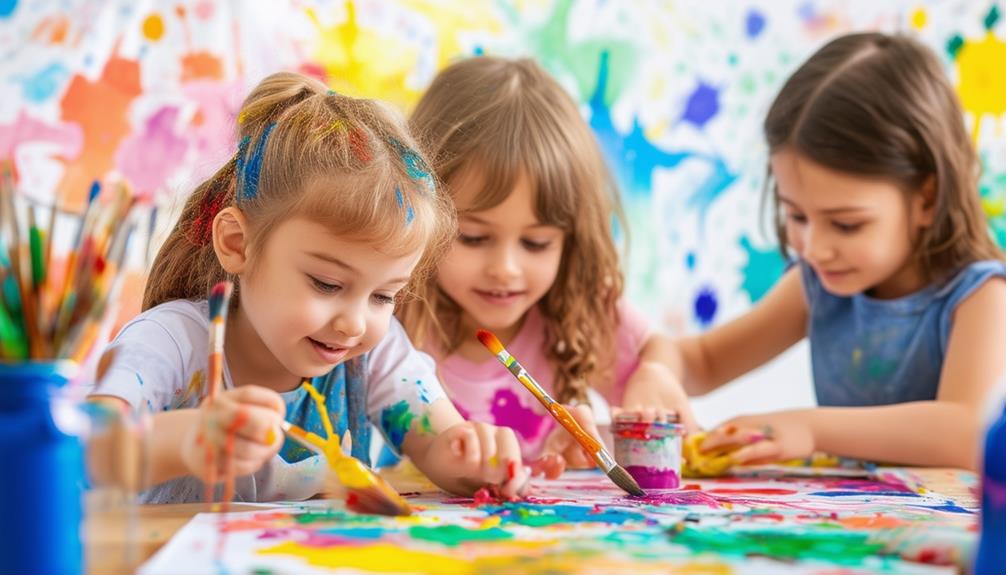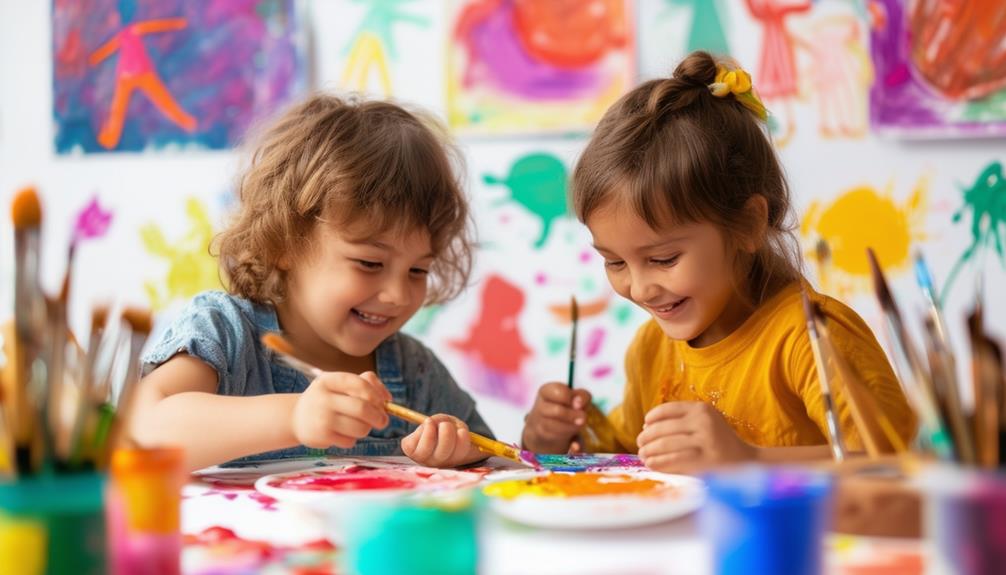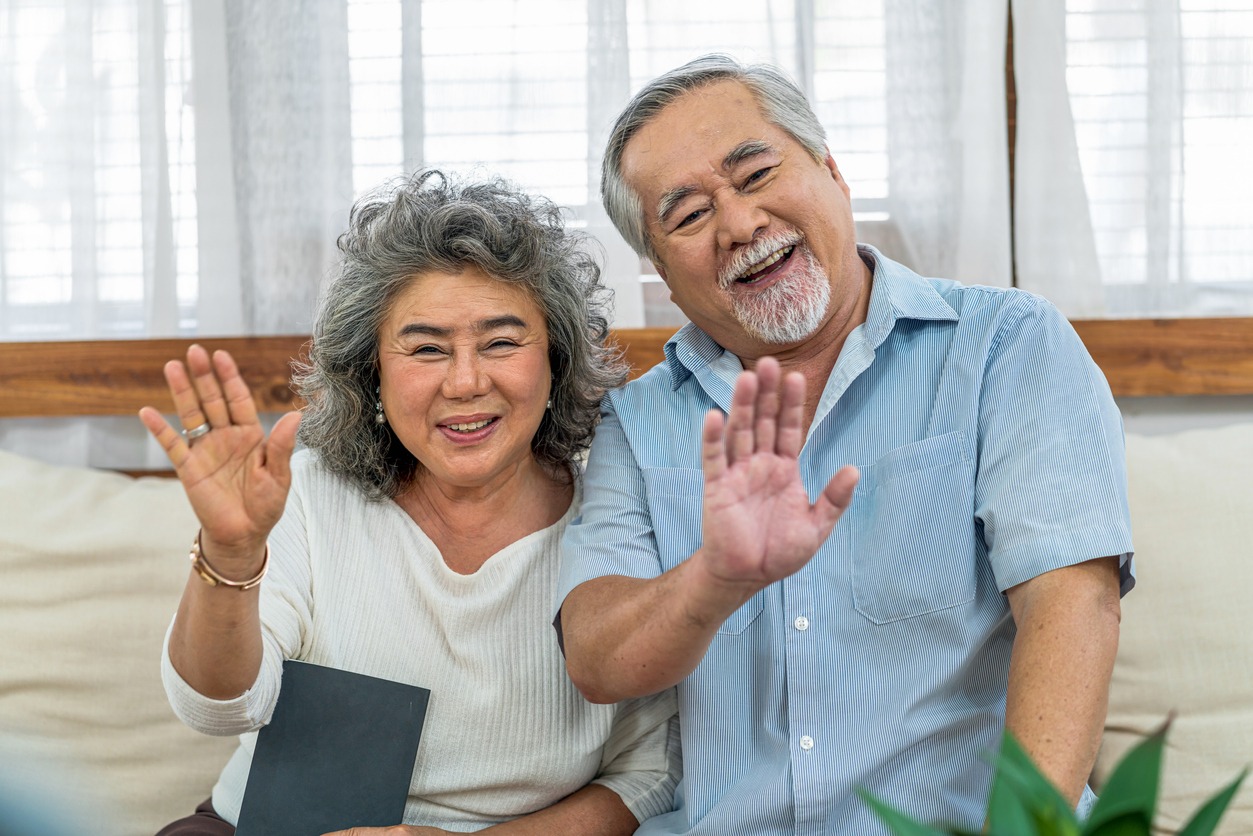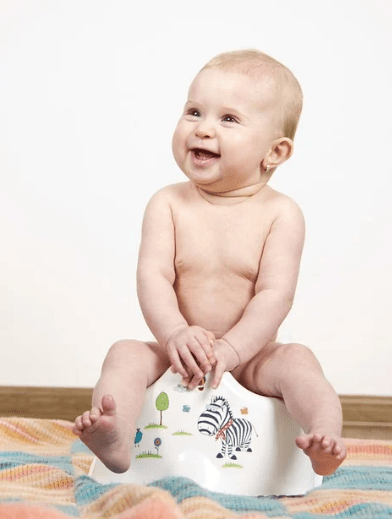The Benefits of Painting for Child Development

Encouraging a child to pick up a paintbrush nurtures essential aspects of their development. Painting enhances fine motor skills by refining hand-eye coordination and strengthening hand muscles with each brushstroke. Additionally, it fosters creativity and imagination, allowing children to express themselves in vibrant ways. Emotionally, painting provides an outlet for expression and supports cognitive growth. Curious about the profound impacts this simple activity can have on a child's overall development? Let's explore further.
Enhancing Fine Motor Skills
By engaging in painting, children refine their motor skills through the manipulation of brushes and exploration of paint textures. Each precise brushstroke and controlled movement enhances their fine motor skills. Beyond creating art, painting aids in developing vital hand-eye coordination. Maintaining their brush within designated boundaries helps children understand the connection between their hand movements and visual input.
Additionally, painting significantly improves spatial awareness. As children navigate the space between the brush and paper, they learn to judge distances and positions more accurately. This skill translates to other areas of motor development, such as writing and playing sports. The act of painting also strengthens hand muscles and improves control, laying a solid foundation for tasks that require fine motor precision.
Boosting Creativity and Imagination
Painting is a powerful tool for children to express their creativity and imagination. When young children engage in activities like painting, they explore colors, shapes, and expressions, which fuels their creativity and helps them think innovatively.
Through painting, kids make decisions about colors and shapes, fostering critical thinking and problem-solving skills. They visualize their ideas and bring them to life on paper, which is empowering. Here's how painting enhances creativity and imagination:
- Color Choices: Selecting colors allows children to experiment with combinations, understanding aesthetics and emotional tones.
- Shape Creation: Forming shapes helps children develop spatial awareness and understand geometric relationships.
- Expressive Freedom: Painting offers a platform for kids to visually portray their thoughts and experiences, enhancing creative expression.
These activities nurture a child's imagination and support cognitive growth. Encourage your child's painting endeavors and watch their creativity and imagination flourish.
Supporting Emotional Expression

When children paint, they find a safe and expressive outlet for conveying complex emotions. Painting allows kids to express feelings they might not yet have the words for, using colors, shapes, and brushstrokes to communicate their inner world. This creative process supports the development of emotional intelligence, as children learn to recognize and articulate their emotions through their artwork.
Engaging in painting activities prevents emotional bottling up, fostering healthy emotional outlets. Instead of internalizing their feelings, kids have a tangible way to release and explore them. This practice promotes emotional well-being and helps children manage their emotions constructively.
Children's artwork serves as a powerful tool for enhancing expression and understanding. As they paint, they access a deeper level of self-awareness, which is vital for developing empathy and emotional intelligence. The act of creating art becomes a meaningful dialogue between their inner world and the external one.
Through painting, children find emotional outlets that are both safe and enriching. They can express themselves creatively and authentically, making painting an important activity for emotional development. By encouraging this form of expression, you help children build a strong foundation for emotional health and resilience.
Fostering Cognitive Development
When your child paints, they enhance their problem-solving skills through choices in color and artistic techniques. This creative process also strengthens their decision-making abilities and stimulates their imagination, thereby sharpening their overall cognitive development.
Enhancing Problem-Solving Skills
Through the act of selecting colors, shapes, and techniques, children develop essential problem-solving skills that enhance their cognitive growth. When kids pick up a paintbrush, they're not just creating art; they're engaging in a process that enriches their critical thinking and decision-making abilities. By making artistic choices, they learn to evaluate different options and solve problems creatively.
Here are three ways painting fosters cognitive development:
- Experimentation: Kids try out diverse colors and shapes, figuring out what works best for their vision. This trial-and-error process sharpens their problem-solving skills.
- Overcoming Challenges: Whether it's mixing the right shade or fixing a mistake, children learn to tackle obstacles head-on, improving their critical thinking.
- Creative Solutions: Painting encourages kids to think outside the box, nurturing their ability to come up with original solutions to artistic challenges.
Boosting Decision-Making Abilities
Painting empowers children to make thoughtful choices, enriching their cognitive development. When kids select colors, shapes, and techniques, they're not just creating art—they're honing their decision-making skills. Each selection in painting stimulates their cognitive abilities, encouraging critical thinking and problem-solving.
As your child decides which brush to use or how to blend colors, they're engaging in tasks that strengthen their cognitive prowess. These decisions, though seemingly simple, are crucial for their cognitive development. They learn to assess options, predict outcomes, and reflect on their choices, fostering a deeper understanding of cause and effect.
Moreover, painting offers a unique platform for children to experiment. They can explore different textures and mediums, making countless decisions along the way. This process of trial and error improves their problem-solving skills, as they figure out what works best to achieve their desired result.
Ultimately, the act of painting nurtures cognitive growth by encouraging children to think critically and make informed choices. So, the next time your child picks up a paintbrush, keep in mind that they're not just having fun—they're building fundamental cognitive abilities that will serve them well throughout life.
Improving Language Skills

Discussing their artwork allows children to enhance their vocabulary and language skills. When kids paint, they often want to share their creative process and the stories behind their masterpieces. This narrating practice plays a crucial role in their language development. As they describe their art, children expand their vocabulary and refine their verbal skills. Talking about their paintings also helps them gain fluency and confidence in their expression.
Here's how painting aids in improving language skills:
- Language Development: Describing their artwork helps children practice using new words and phrases, broadening their vocabulary.
- Communication Skills: Engaging in conversations about their paintings encourages kids to articulate their thoughts clearly, enhancing their overall communication skills.
- Expression and Confidence: Painting provides a platform for children to express their ideas and emotions verbally, helping them build confidence in their verbal abilities.
Encouraging your child to talk about their paintings isn't just about appreciating art—it's a powerful way to support their language growth. By fostering these discussions, you help them become more articulate and confident communicators, benefitting them in many areas of life.
Building Self-Esteem
By expressing their inner thoughts and emotions through painting, children can significantly enhance their self-esteem. When kids translate their imagination into tangible art, they gain a sense of accomplishment that boosts their confidence. This process of artistic expression is about more than just creating a visual piece; it involves examining and communicating feelings in a safe and nurturing environment.
Engaging in painting fosters a positive self-image in children. As they see their skills improve and receive praise for their work, their self-worth naturally increases. This can be incredibly powerful in building a strong foundation of self-esteem. The act of creating something unique gives children a sense of pride and ownership over their abilities.
Here's a quick comparison of key benefits:
| Benefit | Impact on Self-Esteem |
|---|---|
| Sense of accomplishment | Boosts confidence |
| Artistic expression | Facilitates emotional communication |
| Positive self-image | Encourages pride in abilities |
| Improved skills | Enhances self-worth |
As children continue to engage in painting, these benefits compound, leading to a more confident and self-assured individual. Painting isn't just an activity; it's a powerful tool for emotional and personal development.
Encouraging Social Interaction

When children engage in collaborative art projects, they naturally build peer relationships and share creative ideas. Painting together fosters communication, teamwork, and problem-solving skills as they work toward a common goal. By sharing their artwork, children express their thoughts and feelings, enhancing their social skills and empathy.
Building Peer Relationships
Engaging in group painting activities not only nurtures creativity but also enhances essential social skills through collaboration and communication. When children participate in painting together, they naturally form peer relationships by sharing ideas and drawing inspiration from each other, which strengthens their bonds.
Participating in group painting activities provides several social benefits:
- Building Social Bonds: Sharing and discussing each other's paintings helps children develop empathy and understanding, fostering deeper social connections.
- Promoting Teamwork: Collaborative projects teach children the importance of working together towards a common goal, enhancing their sense of community and teamwork.
- Improving Communication: Group painting encourages open dialogue, allowing children to practice expressing their thoughts and listening to others.
Through these interactions, children learn to appreciate different perspectives and develop strong peer relationships. They become more adept at communicating their ideas and understanding the importance of cooperation. Regular participation in group painting sessions can significantly improve their social skills, leading to lasting friendships and a stronger sense of belonging within their peer groups.
Collaborative Art Projects
Collaborative art projects leverage the strengths of group activities by encouraging children to work together towards a shared creative vision. These activities foster social interaction and develop essential teamwork skills. As kids communicate, share ideas, and solve problems together, their ability to collaborate and think creatively is enriched.
By integrating diverse perspectives and skills, children create a collective masterpiece that reflects the unique input of each participant. This process requires cooperation and relationship building, helping them appreciate the distinct contributions of their peers. Sharing materials and working towards a common artistic goal strengthens social bonds and fosters a sense of community.
Participating in collaborative art projects offers an engaging way for kids to learn communication and problem-solving. As they navigate the challenges of creating art together, they learn to value each other's opinions and perspectives, which is crucial for social development. When planning activities, consider the profound benefits of collaborative art projects in enhancing social interaction and building essential life skills.
Sharing Creative Ideas
Engaging in painting activities provides children a unique avenue to express their creativity and interact socially with peers. When kids paint together, they learn effective communication, crucial for developing strong social skills. They exchange creative ideas, listen to others, and offer feedback, which helps them understand different perspectives and fosters empathy.
Collaborative painting projects are particularly beneficial. They teach children the importance of teamwork and cooperation. Working on a shared canvas requires taking turns, sharing materials, and respecting each other's space and ideas. This not only enhances their teamwork abilities but also creates a positive learning environment.
Key benefits of sharing creative ideas through painting include:
- Improved Communication Skills: Kids learn to articulate their thoughts and feelings clearly while understanding others better.
- Enhanced Social Skills: Activities like listening, taking turns, and respecting diverse viewpoints are naturally developed.
- Stronger Teamwork: Collaborative painting projects encourage cooperation and build a sense of community among children.




